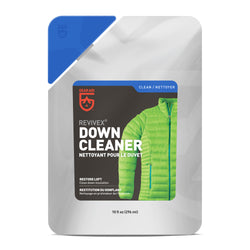Gear Care & Repair
Down Fill vs Synthetic Insulation
All that technical jargon about down fill and synthetic insulation got you confused?
When you’re looking for a new puffy jacket there are a few important things you should know. First you need to take a look at what kind of conditions you’ll be in. Is it a dry cold that gets in your bones? Or is it a wet cold that makes you feel damp and clammy? Is there a chance that it might rain or get wet while you’re outside? Next you’ll need to decide how you'll be using the jacket.
Are you planning on wearing it from car to office? Will you be stuffing it into your backpack for an emergency layer, or will you be using it while you’re out back country skiing? Once you’ve decided what kind of weather and how you’ll be using it, take a look at the fill options.
UNDERSTANDING DOWN FILL
What is down? Simply put: down is the fluffy under-layer of feathers on ducks and geese that helps insulate them from the cold. It also works great as a thermal insulator in jackets and sleeping bags.
Down is measured in “fill power.” Fill power measures how much air an ounce of down can trap which is how it helps insulate you against the cold. The more air the down can trap, aka the fluffier the feathers, the warmer you’ll stay. So a higher fill jacket will hold more air and keep you warmer.
The downside of down is that once it gets wet, down loses its ability to hold air and becomes a poor insulator. There are pretreated water repellent down plumes that are able to withstand more exposure to water which assists in maintaining loft and insulating properties.
Down is for you if you are concerned about weight, want something that packs down small, and don’t plan on exposing it to wet environments.
Live or play in a place where GORE-TEX® and rain boots are considered daily attire? Synthetic insulation is probably the better option for you.
UNDERSTANDING SYNTHETIC INSULATION
Synthetic insulation is made of ultrafine polyester fibers. These fibers are interwoven and create compact insulating pockets that trap air. This is done by using either long continuous filaments or short staples that are 2” or less in length. Short staples are easier to compress and are more flexible. Longer filaments may be a bit bulkier, but are able to withstand wear and tear without losing shape.
Unlike down, synthetic insulation will still keep you warm when it’s wet. It will also dry faster, but it won’t pack down like a down jacket will.
Synthetic insulation is for you if you plan on doing a high amount of aerobic activity in your jacket or if you are in a situation where you are likely to get wet from rain, snow, dew, or sweat.
Whether you choose down or synthetic insulation for your new jacket or sleeping bag, the most important thing is to maintain them. Using special formulas, like Revivex Down Cleaner, will help keep you stay warmer and keep your jacket performing.
Originally Published: Dec 29, 2014

